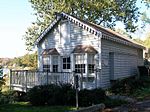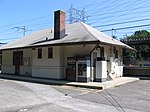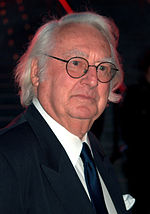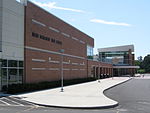Rowayton, Connecticut

Rowayton is an affluent coastal village in the city of Norwalk, Connecticut, roughly 40 miles (64 km) from New York City. The community is governed by the Sixth Taxing District of Norwalk and has a number of active local associations, including the Civic Association, the Historical Society, the Rowayton Library, a Gardeners Club, and a Parents Exchange. Rowayton annually plays host to a Shakespearean production at Pinkney Park, produced by Shakespeare on the Sound, and also has an active community of artists, many of whom are associated with the Rowayton Arts Center. The Rowayton station on the New Haven line of the Metro-North Railroad is located within the community, as is an elementary school, a public beach and the Rowayton Public Library.
Excerpt from the Wikipedia article Rowayton, Connecticut (License: CC BY-SA 3.0, Authors, Images).Rowayton, Connecticut
Highland Avenue, Norwalk
Geographical coordinates (GPS) Address Nearby Places Show on map
Geographical coordinates (GPS)
| Latitude | Longitude |
|---|---|
| N 41.063888888889 ° | E -73.436388888889 ° |
Address
Highland Avenue 20
06853 Norwalk
Connecticut, United States
Open on Google Maps








